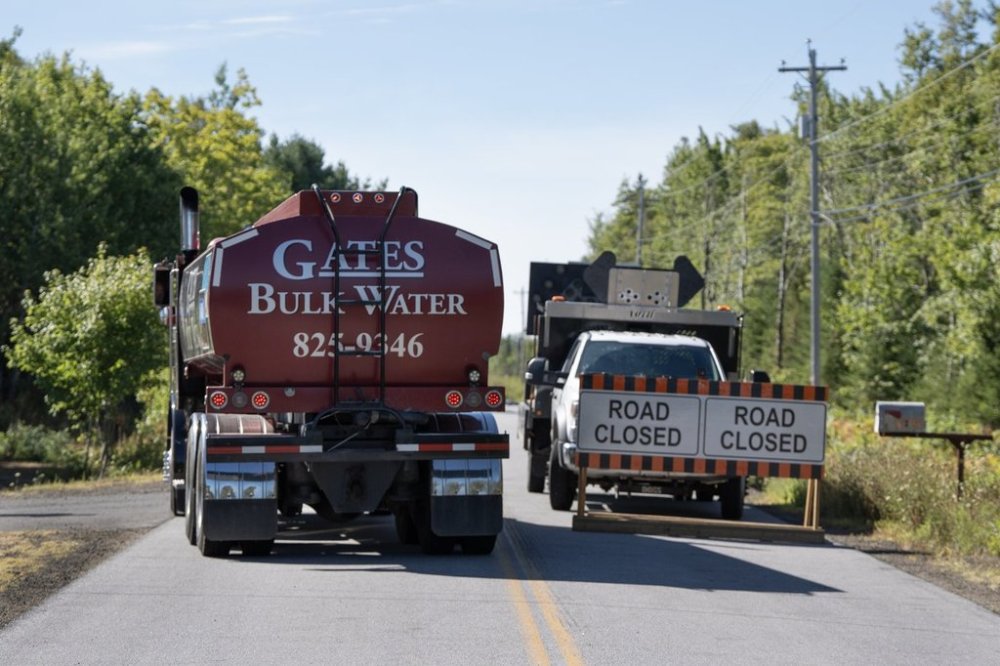Firefighting efforts continue in Atlantic Canada as large storm passes offshore
Advertisement
Read this article for free:
or
Already have an account? Log in here »
To continue reading, please subscribe:
Monthly Digital Subscription
$0 for the first 4 weeks*
- Enjoy unlimited reading on winnipegfreepress.com
- Read the E-Edition, our digital replica newspaper
- Access News Break, our award-winning app
- Play interactive puzzles
*No charge for 4 weeks then price increases to the regular rate of $19.00 plus GST every four weeks. Offer available to new and qualified returning subscribers only. Cancel any time.
Monthly Digital Subscription
$4.75/week*
- Enjoy unlimited reading on winnipegfreepress.com
- Read the E-Edition, our digital replica newspaper
- Access News Break, our award-winning app
- Play interactive puzzles
*Billed as $19 plus GST every four weeks. Cancel any time.
To continue reading, please subscribe:
Add Free Press access to your Brandon Sun subscription for only an additional
$1 for the first 4 weeks*
*Your next subscription payment will increase by $1.00 and you will be charged $16.99 plus GST for four weeks. After four weeks, your payment will increase to $23.99 plus GST every four weeks.
Read unlimited articles for free today:
or
Already have an account? Log in here »
HALIFAX – Nova Scotia’s largest wildfire has grown as firefighters continue to deal with stronger winds forecast for the province’s Annapolis Valley.
Officials from the Department of Natural Resources said wind shifts that resulted late Friday as Hurricane Erin passed well off the coast of the province, saw the Long Lake fire spread west.
The blaze, which had earlier been slightly over 32 square kilometres in size, grew to 32.5 kilometres in area as of late Saturday afternoon.

“We did have the hurricane affect us a little bit yesterday, but we did get through that better than we thought,” said Jim Rudderham, director of fleet and forest protection.
“We weren’t set to receive a direct hit from the hurricane … it did result in a shift in the winds and the speeds to the north, and that has passed.”
Environment Canada said the hurricane had transitioned to a post-tropical cyclone. An update late Saturday afternoon placed the storm 787 kilometres east-southeast of St. John’s, N.L., with maximum sustained winds of 120 kilometres an hour.
Firefighters were making progress in their suppression efforts on Saturday, although the Long Lake fire remained out of control, officials said.
“That status represents that we are just uncertain as to how much or whether this fire might grow given the current weather conditions,” said Scott Tingley, manager of forest protection.
Tingley said the priority for crews is to shore up the perimeter around the area where the fire has spread, and also along its northern edges, because of strong winds forecast for Sunday that are expected from a southerly direction. The northern edge of the fire is closer to homes in the community of West Dalhousie, N.S.
Rudderham said the newer winds in the forecast are unrelated to the storm offshore. He added that firefighters are hoping for some relief on Monday when an undetermined amount of rain is in the forecast.
“Even with that rain we might get, we need extended rain for multiple days before it has any real good effect on this fire, or on the fire ban or the woods travel restriction,” he said.
Officials said 52 natural resources firefighters were being assisted on the Long Lake fire by 62 firefighters from Ontario and 44 local volunteer firefighters along with six helicopters, six planes and 30 heavy equipment operators.
In Newfoundland and Labrador, officials said aerial suppression efforts with helicopters were continuing Saturday on the Kingston wildfire in Conception Bay North.
They said provincial ground crews were on site along with firefighters from Ontario and British Columbia, assisted by personnel from the Canadian Armed Forces and volunteer firefighters.
Meanwhile, a fire at Paddy’s Pond outside of St. John’s, N.L. was classified as under control while the Martin Lake fire in the central part of the province was “being held.”
Later Saturday, the province lifted previous evacuation orders for several communities including the town of Salmon Cove and the communities of Burnt Point, Gull Island and areas north of Northern Bay Brook Bridge in Northern Bay.
In New Brunswick, the province’s fire watch dashboard categorized two fires as out of control.
The Beaver Lake Stream fire in Northumberland County was estimated at just over two square kilometres, while the Rocky Brook fire in Restigouche County was 1.8 square kilometres in size.
This report by The Canadian Press was first published Aug. 23, 2025

